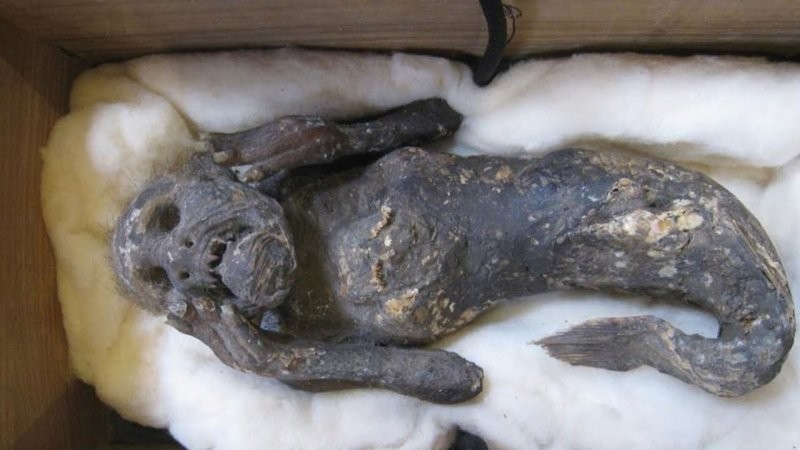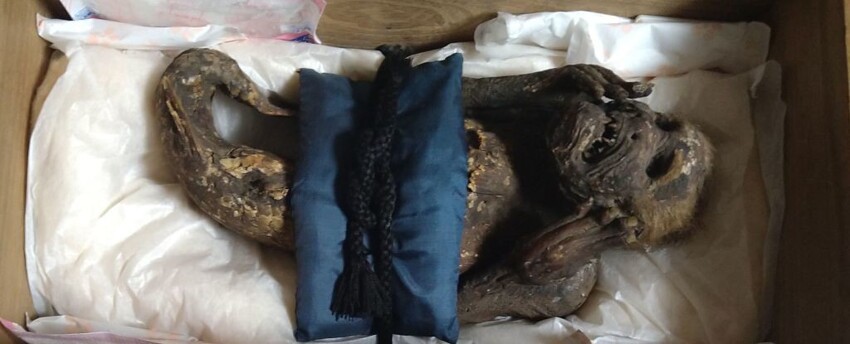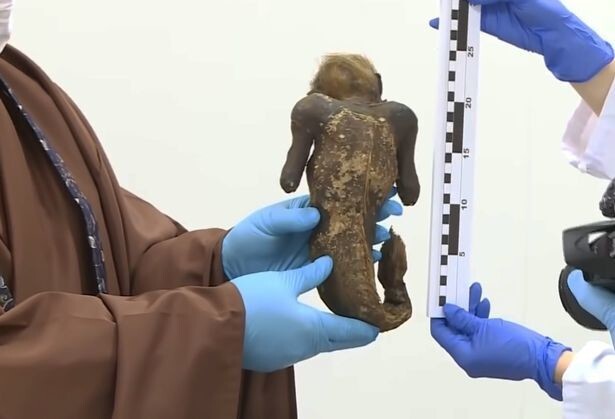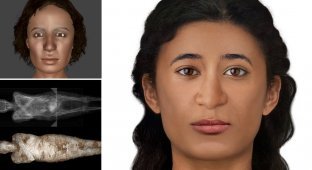The mystery of the creepy mummified "mermaid" from Japan is finally revealed (5 photos + 1 video)
Researchers from Kurashiki University of Science and Arts (KUSA) conducted an in-depth analysis of an artifact stored in the Enjuin Temple in Asakuchi city (Japan). This is the mummy of an unusual creature 30 centimeters in length, with a scaly fishtail, human-like head, and two hands. Scientists carefully studied its composition, enlightening through, and published the results. 
In Japanese mythology, ningyo are mentioned - creatures that live in water. The same mermaids, only not so beautiful. And their meat and bones have healing properties.
It is not known how the ningyo mummy ended up in the Enjuin Temple. But together with it is a handwritten document dating from 1903, in which it is said that the mermaid was caught by fishermen in Kochi prefecture in 1736-1741. 
In the temples and museums of Japan, several similar Ningyo mummies and they mostly belong to the Edo period (1603-1868). Scientists decided to study at least one of them and applied for permission to the abbot of Enjuin Temple. 
This permission was given to them and they began to investigate dried creature in February 2022. The scientists conducted a visual examination, X-ray, computed tomography, DNA analysis, studied object using an electron microscope and radiocarbon dating.
Now they can say with absolute certainty that they know what this "mermaid" consists of. 
The first thing that caught their eye was the complete absence skeleton at the top of the creature. Usually fake mummies of mermaids, these creepy Frankensteins, made by combining the remains of monkeys and fish. But in In this case, one could only talk about the tail of the fish, there was a skeleton there. And what's upstairs? 
The scan showed that the object was made of cloth, cotton and paper coated with a mixture of charcoal paste and sand. head in mostly made of cotton and covered with something like plaster. hair on head - animal hair, and scales - from two types of fish. Top part the body is covered with the skin of a puffer fish, and the lower one is covered with the scales of one of the types of croaker. Fingernails are probably made from animal horn, and the sharp-toothed jaw used to belong to some kind of carnivorous fish.
Radiocarbon analysis of some fish scales disproved a legend set forth in a note that is stored in a box with a mummy. He showed that the skillful craft was created only in the late 1800s.
And yet, despite the "breaking the covers", the ningyo mummy remains valuable artifact and will be returned to the temple, where it will continue to be guarded and read.






















